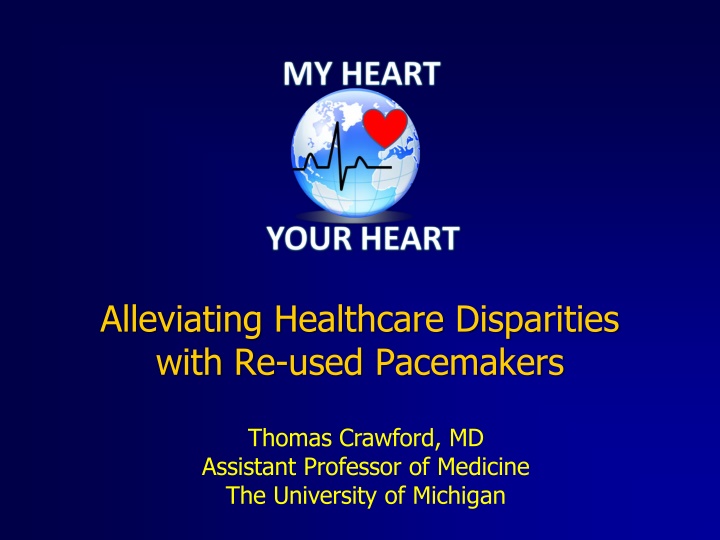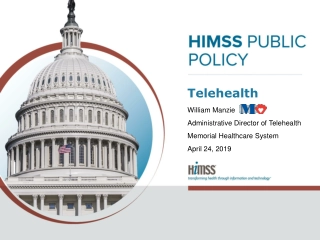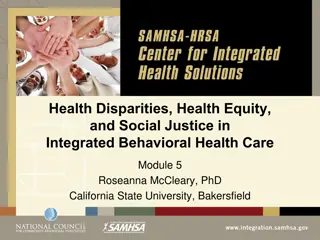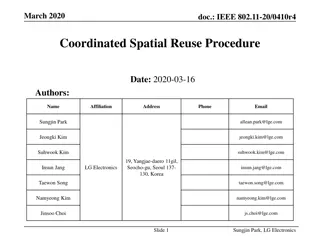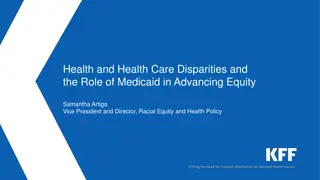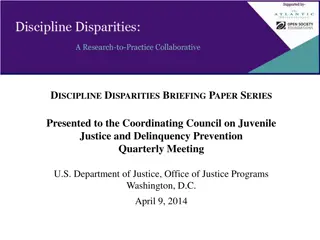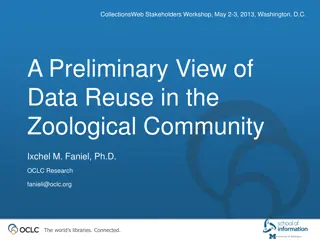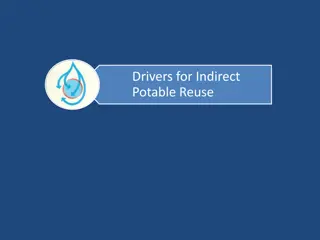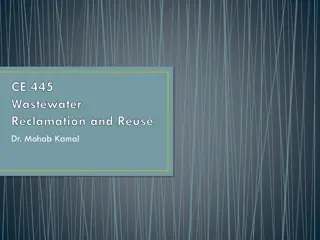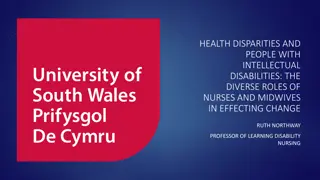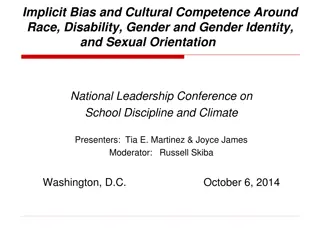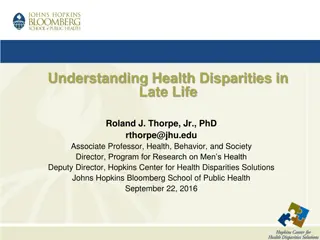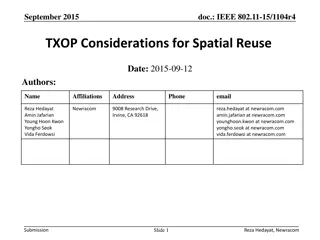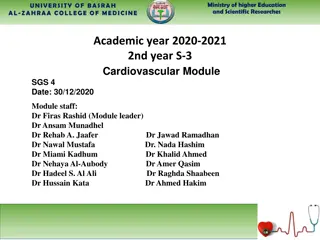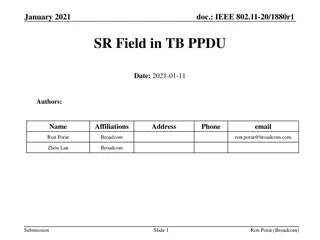Addressing Healthcare Disparities through Pacemaker Reuse
Healthcare disparities in cardiovascular disease burden are evident in low-income countries where millions die annually. The initiative to reuse pacemakers aims to bridge the gap in device supply, with a focus on safety, feasibility, and patient perspectives from prior studies on device reutilization.
Download Presentation

Please find below an Image/Link to download the presentation.
The content on the website is provided AS IS for your information and personal use only. It may not be sold, licensed, or shared on other websites without obtaining consent from the author.If you encounter any issues during the download, it is possible that the publisher has removed the file from their server.
You are allowed to download the files provided on this website for personal or commercial use, subject to the condition that they are used lawfully. All files are the property of their respective owners.
The content on the website is provided AS IS for your information and personal use only. It may not be sold, licensed, or shared on other websites without obtaining consent from the author.
E N D
Presentation Transcript
Alleviating Healthcare Disparities with Re-used Pacemakers Thomas Crawford, MD Assistant Professor of Medicine The University of Michigan
Global Cardiovascular Disease Mortality Mendis S. J Hypertension. 25, 1578-1582
Cardiovascular Disease Burden Overwhelming majority of deaths due to CVD occur in low and middle income countries 1 million people die annually from untreated brady- arrhythmia worldwide 25 Deaths due to CVD (in millions) 20 15 10 5 0 2005 2030 High Income Countries Low Income Countries Joshi R J Am Coll Cardiol. 2008 Dec 2;52(23):1817-25.
Bradyarrhythmia Therapy Disparities 800 700 Number of Implants 600 500 400 300 200 100 0 U.S. Peru Thailand New Pacemaker Implants (per million) New ICD Implants (per million) Mond HG. PACE 2008 Sep;31(9):1202-12.
My Heart Your Heart The Mission Bridge the gap between the demand for pacemakers and their inadequate supply in the low and middle income countries Create a blueprint for a safe and legal pacemaker reuse Establish a non-profit with the goal of device acquisition, sterilization, and distribution to patients in need outside the U.S.
MHYH Who Are We? The University of Michigan Cardiovascular Center Michigan Funeral Directors Association World Medical Relief Implant Recycling, Inc. Patients and families nationwide
Making the Case for Device Reutilization 1) Preliminary Safety Data 2) Patient and General Population Views 3) Funeral Home Director Surveys 4) Feasibility of device acquisition 5) Pivotal clinical trial
Prior Studies of Pacemaker Reutilization Medical databases searched for studies that examined pacemaker re-use (1970 to 2011) 18 small studies have examined the safety of pacemaker re-use Meta-analysis to compare complication rate of new vs. reused devices
Pacemaker Meta-Analysis Reutilized pacemakers are not at higher risk of infection when compared to new device implant Baman et al Circ-EP 2011
Pacemaker Meta-Analysis Reutilized pacemakers are at a higher risk of device malfunction when compared to new device implantation Baman et al Circ-EP 2011
Patient and General Population Survey 100 device patients 1009 members of general population in U of M Clinics waiting rooms 100 87 <0.01 90 80 71 P=0.80 70 Patient Population N=100 General Population N=1009 58 60 53 % In Favor P=0.10 42 50 37 40 30 20 10 0 Donate to those in need in 3rd world countries* Donate to manufacturer for technology improvement* Donate to veterinarian for use in animal hospitals* Gakenheimer et al JICE 2011 *Responses were not mutually exclusive
Funeral Director Survey % Funeral Directors (n=90) Survey Questions Discard pacemakers in waste or store with no intended purpose Return pacemakers to device manufacturer Willing to donate the devices to charitable organizations if given the opportunity 84% 4% 89% Gakenheimer et al JICE 2011
Devices with Acceptable Batteries Adequate battery life defined as 75% remaining or 4 years longevity 3000 320 (15%) 2500 2000 1500 118 (18%) 1000 112 (30%) 500 0 Pacemakers Implantable Defibrillators 21% Biventricular ICDs 68% 12%
Study Design Prospective multicenter study of safety and efficacy Standardized and validated sterilization protocol 500 patients Interim analysis at 12 months (complications). Longevity analysis Up to 7 years
Food and Drug Administration Legal Counsel Authorize safe and legal device distribution Provide consent and guidelines for distribution Funeral Homes & Crematories Center(s) of Excellence Non Profit Charitable Organization Consent family and explant devices Establish communication with funeral homes to facilitate device collection Sterilize and package devices Assess qualifications and safety record of implanting centers Maintain database of all devices received and distributed Funeral LMIC Device Implantation Center Directors Association Facilitate awareness and interaction between funeral homes and academic center Assess financial status of possible recipients Safely and effectively implant devices Provide follow-up data for implanted devices
Conclusion 1. Prior studies support the safety of pacemaker re-use 2. General public, pacemaker patients, and funeral home directors support reutilization 3. Approximately 1 out of 5 devices have >75% original battery life 4. Establishing a validated pacemaker reuse program could transform a currently wasted resource into an opportunity for a new life
Date: Tuesday, September 4, 2012 9:59 AM Dear Sir/Madam: My wife recently passed away (August 11, 2012) and one of her final wishes was that her pacemaker be donated for someone in need. At my request, our funeral director removed the device and I have the pacemaker, a Medtronic Sigma Sdr dual lead, at home. Our family would very much like to donate this device to a needy person overseas. Your attention to this matter will allow me to complete this final request. Thank you, DJA
Letter to Project My Heart I am blessed to be helped by your humanitarian and I am blessed to be helped by your humanitarian and godly efforts which gave me hope and life. Truly I godly efforts which gave me hope and life. Truly I have a happy life because you made me feel loved even have a happy life because you made me feel loved even though you didn t know me. though you didn t know me.
Thank you! Kim A Eagle, M.D. Timir S Baman, M.D. Patricia Sovitch, NP Sandra Arlinghaus, Ph.D. Frank Arlinghaus, M.D. John Nystuen , Ph.D.
Acknowledgements MHYH is supported by grants from: The Hewlett Foundation The Mardigian Foundation University of Michigan Cardiovascular Center Mr. Sheldon Davis The Sincock Family
